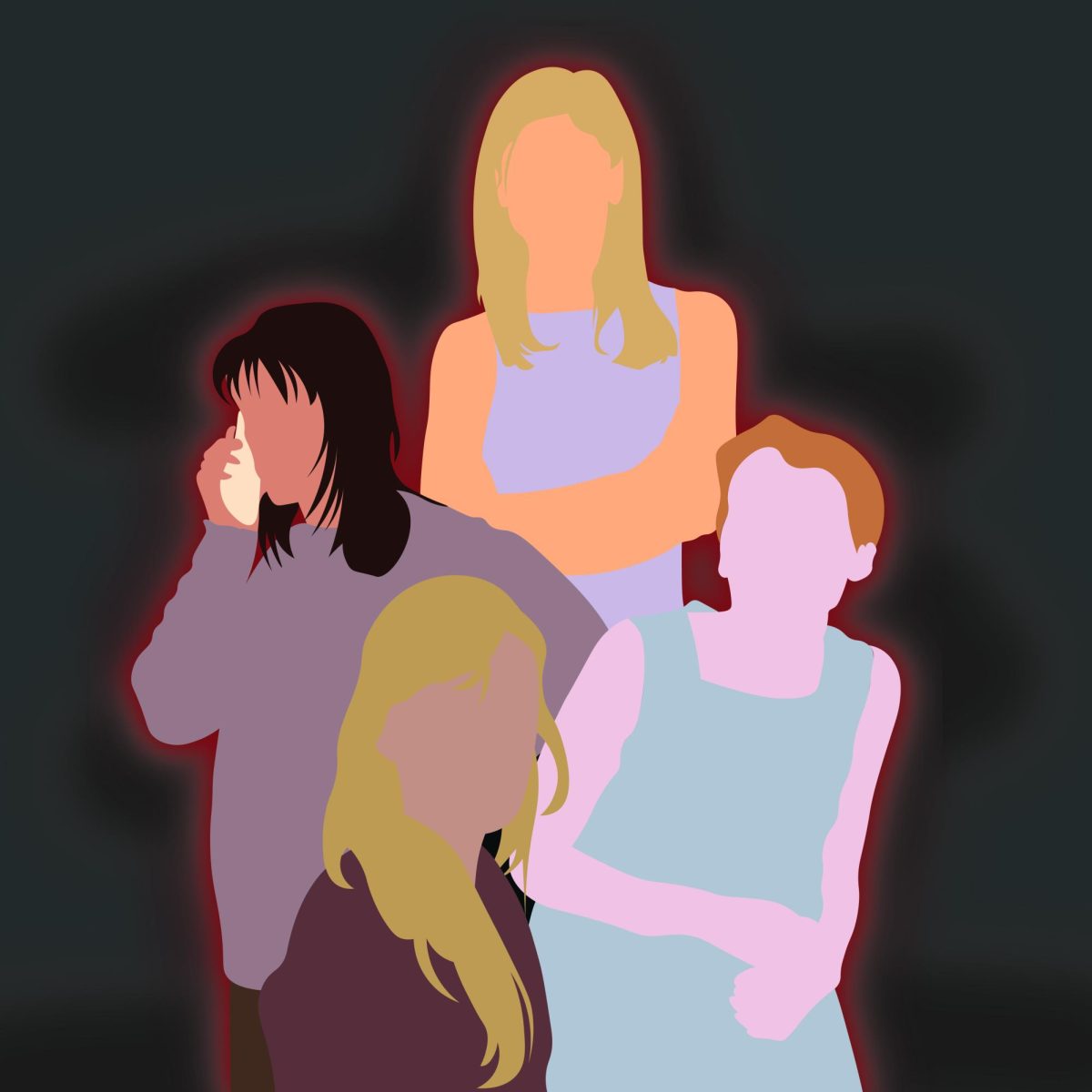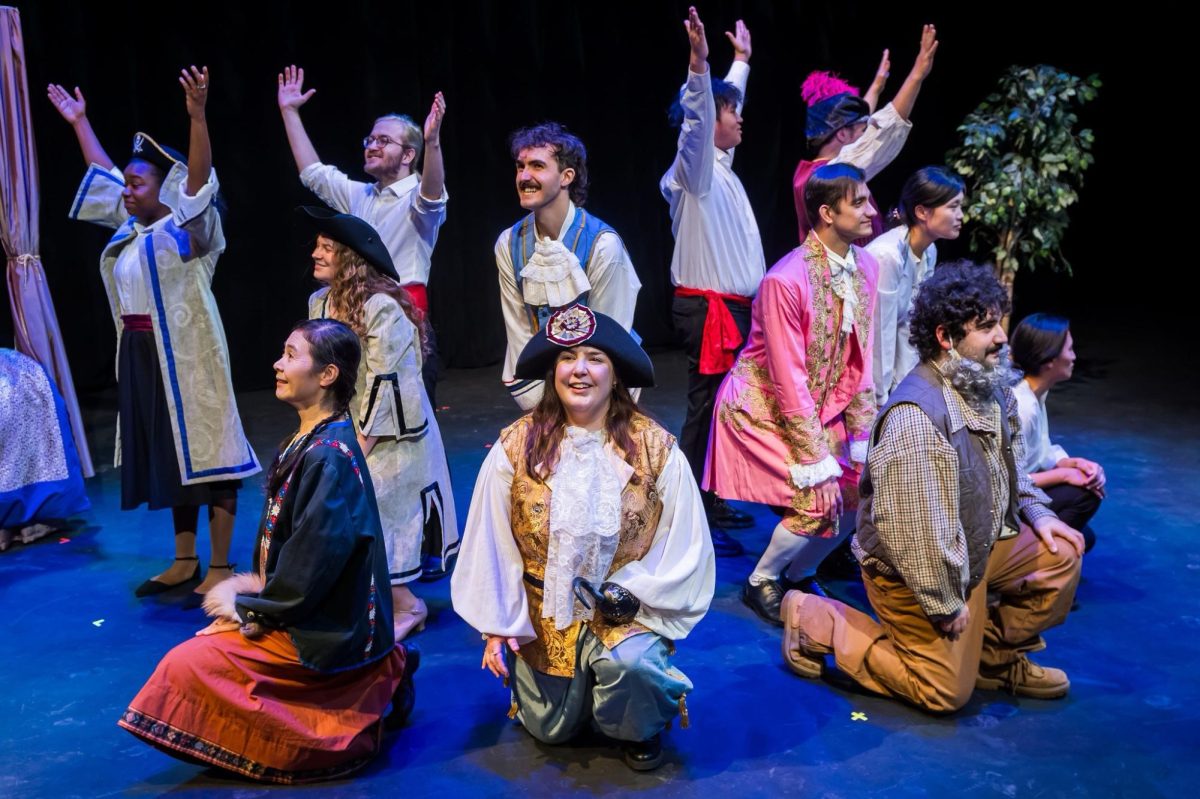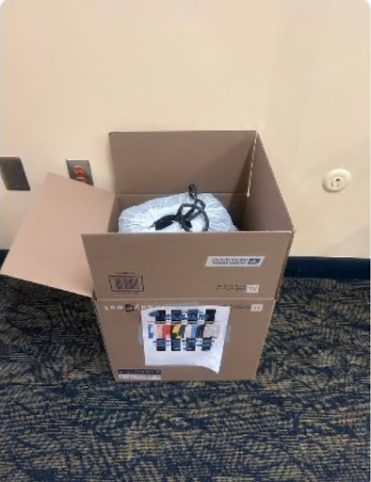A blonde woman runs into a dark alley looking for a way out as she notices there’s no escape from the masked figure following her with a knife.
She is surrounded by walls as the figure approaches her and raises his knife into the air ready to drive it through her.
Is this where she meets her end? For most women in horror movies … it is.
Director and writer Joss Whedon became frustrated seeing women on screen die this way and created the TV show “Buffy the Vampire Slayer” to show women can fight back.
Although viewers may feel empowered by watching the show’s protagonist, Buffy Summers battle monsters, the women working behind the scenes were disempowered by Whedon’s behavior. One of the show’s writers, Jose Molina, said he bragged about making female writers cry.
In recent years, actors like Charisma Carpenter, who worked with Whedon on the “Buffy the Vampire Slayer” set, have shared stories of him harassing them on set.
Madison Allen, who authored a master’s thesis on the portrayal of women in horror movies, said this behavior was reflected in episodes like “Seeing Red” when Summers is nearly raped.
“[Whedon is] problematic and it’s not lost on me that he forced [Summers] to be in this scenario,” she said.
With this in mind, Allen said she hopes for women behind the camera to gain more control of these narratives to better reflect women’s empowerment on and off the screen.
“There’s nothing more powerful, I think, than hearing a story from a friend or someone who has been through something similar,” she said.
Rosemary’s body
Growing up in the ‘90s, Allen said she became used to seeing “final girls” like Sidney Prescott from “Scream” go toe-to-toe with near-death experiences yet always live to see the sequel.
“I realized it was more than just like, ‘Oh, there has to be someone who survives,’” she said. “No, it has to be a girl, and then I had to figure out why.”
To answer this question, Allen began researching theories for her thesis when she came across Yi-Fu Tuan’s “Space and Place: The Perspective of Experience”. The “Space and Place” theory explores how places offer security and protection while spaces offer freedom.
Aligning with Tuan’s theory, women’s bodies can be viewed as a place – their bodies offer security and other necessities to infants during pregnancy. This then reminded Allen of Rosemary Woodhouse from “Rosemary’s Baby” because her body offered security to her baby while she was pregnant.
Women in horror movies like Woodhouse and Jay Height, from “It Follows,” become places for other characters and the viewers, offering security and a sense of familiarity like a mother figure, she said.
Woodhouse fulfills the role of being a mother because she becomes a mother to her baby and the cult in the film; however, Height does not fulfill the physical role of being a mother, she said.
“Even if it’s not through pregnancy or something like that, [Height] is still mothering people, she’s still having to offer protection, care and concern,” Allen said.
These characters further the theory as their bodies house social anxieties and cultural shifts, she said.
“It Follows” explores society’s fears of casual sex and how women are treated after experiencing it. In the movie, after Height has sex with her boyfriend, a supernatural entity begins to pursue and torture her and her friends, Allen said.
“What are the fears in casual sex?” she said. “And we are always placing that onto [Height] like these things can happen if you’re not careful.”
Height and Woodhouse’s experiences become cautionary tales for viewers because they can witness the aftermath, but are far enough removed to not be affected. This causes these women to be viewed not as an individual, but as a security place, offering protection by enduring pain, Allen said.
Height endures the pain and torture of the supernatural entity by choosing to offer protection to others and not passing it on to another, she said.
“When we think about [women] as a place it becomes a place to learn a lesson or a place to house our fears,” Allen said.
Stella Naymik, a junior digital media production major and director of the Female Filmmakers Initiative (FFI) , said horror movies like “It Follows,” which explores sexually transmitted diseases, allow for greater reflection regarding everyday life.
“Nowadays, we’re seeing less horror movies which are like, ‘Boo, horror, get scared,’” she said. “It’s more like, ‘Look at this thing that is inherently scary in our life. Let’s talk about it, let’s critique it.’”
Whatever happened to women of color?
Tara Conley, an assistant professor of media and journalism, said when horror movies are done correctly, they make commentary on a social, cultural or historical phenomenon.
For example, “The Deliverance” possesses religious undertones as Ebony Jackson and her family realize their Indiana home has a demonic connection, she said.
However, Conley said Black women, like Jackson, tend to either portray a savior or a villain in horror movies, and their portrayals are not accurate.
“I don’t think any form of media representation is 100% accurate,” she said. “I think portrayals can speak to the larger issue of racialized, gendered life in society.”
These portrayals reflect how Hollywood sees Black women and emphasize the need to produce stories reflecting their lived experiences with accurate portrayals, Conley said.
With the lack of urgency to do that, only certain stories gain a large platform and distribution, limiting the number of diverse stories within the mainstream media, she said.
Because of the limited access to large distribution, directors like Jordan Peele become go-to directors for diverse representation, Conley said.
“There’s probably way more independent women of color filmmakers, Black women filmmakers who are doing interesting things in this genre,” she said.
With the portrayals becoming a reflection of how Hollywood sees women of color, there is an emphasis placed on diversity in the production aspect of films.
Organizations, like FFI, are working to provide women of color opportunities to work on film sets to create an accurate reflection of their lived experiences on screen, said Bailey Fair, a junior digital media production major and events coordinator of FFI.
“It’s not a hard thing to do, to write dynamic characters of color, but for some reason, we just go to very shallow dynamics,” she said.
Buffy the gender norms slayer
To create more accurate representation for all women, Fair said there is a need to uplift the stories of all women.
“We need to see women in every role, like men, that get to be the villain, that get to be the one being saved at the end,” she said.
This same idea of seeing women in every role on screen can also be applied to women behind the camera.
Naymik said she has seen a number of women take on different roles behind the camera, but the film field is still very male-dominated.
“Sometimes I struggle to feel included in those spaces,” she said. “I definitely have been on sets, here at Kent, where sexism has been, unfortunately, present.”
For this reason, Naymik said it is important to encourage women’s involvement on film sets.
“That’s why I’m so involved with my work with FFI because I want to create a safe space for women to create where they are the majority,” she said.
From her experience working on different film sets, including her most recent one for the 48 Hour Film Project, which is a horror short film, Fair noticed women tended to have more detail-oriented roles.
“You get men who end up doing lighting, sound and these more hands-on jobs,” she said. “Women are always detail-oriented, the writing, the script supervising and the time managing.”
To combat this, FFI has provided women with experiences in the various roles behind the camera, Fair said.
“Letting women have the opportunity to do the tasks that they’re not usually handed or offered sets them up to then offer themselves as that position later,” she said.
Marcy King, co-owner of Robert Kurtzman MUFX and a makeup FX artist, said she got her start by asking Kurtzman, makeup effects artist and director, for a job.
In 2014, he made a post on Facebook about doing Robert Englund’s Freddy Krueger makeup for the last time in the film “Nightmares in the Makeup Chair,” which King said caught her attention.
“He texted me, ‘Are you actually serious about Chicago?’” she said. “I just immediately called him, and said, ‘You don’t have to pay. I just need to be a fly on the wall.’”
Throughout the process, King said she took on various roles leading to Kurtzman asking her to be his appearance agent. From this, she continued working with Kurtzman and received her first makeup assistant credit for “Gerald’s Game.”
“Basically, that snowballed into doing his [behind the scenes] photography on sets, then holding glue and then asking if I could apply some of [the makeup and prosthetics] with him,” she said.
I don’t know what you’ll do next summer
The portrayal of “final girls” on screens has helped empower women and girls as King said she watched “Buffy the Vampire Slayer” with her daughters.
“I did want my girls to see a … woman killing monsters and just kicking ass. I think that’s super important,” she said.
Naymik said women do have a space within the horror genre, and she looks forward to seeing the future of female protagonists.
“There is a space for women in horror, and we need to make sure that space is welcoming and we’re encouraging more women to make horror movies,” she said.
King remains optimistic about women’s roles behind the camera because while she and Kurtzman were working on the set of “Goons,” she heard about a female-led horror TV show “The Designer.”
After hearing about the TV show’s set, King said she had to visit, and the set was as empowering as she hoped.
“I wanted to come in and say, ‘Hey ladies, I just need to meet you badass women, break a leg, enjoy, wish I was with you,’” she said.
Adriana Gasiewski is a reporter. Contact her at [email protected].











